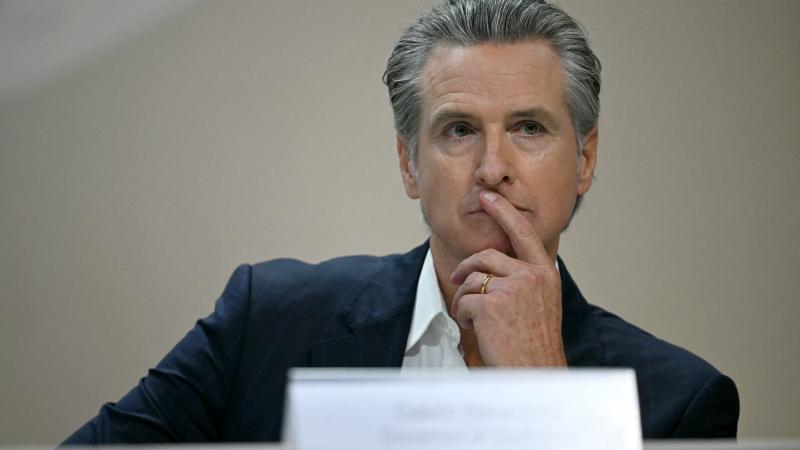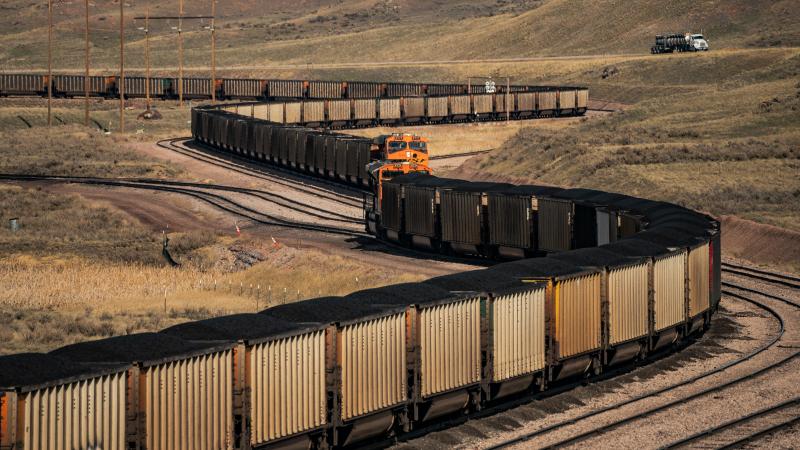California's renewable-heavy grid vulnerable to rolling blackouts, Newsom looks to buy extra energy
“The issue of reliability has to be addressed," California Democrat Gov. Gavin Newsom says about his state's power grid, which relies on renewables.
California appears to be presenting the green movement with yet another reality check.
Democrat Gov. Gavin Newsom has set forth arguably the country's most ambitious state-level plan to transition from fossil fuel to renewable energy.
However, when California's almost inevitable heat waves come in the summer and residents crank up their home air conditioners, officials turn on massive diesel-powered generators to make up for the state’s energy shortfall and to avoid rolling blackouts.
"We laid out the markers on solar and wind, but we recognize that’s not going to get us where we need to go,” Newsom said during a recent news conference. “The issue of reliability has to be addressed.”
The summertime problem is especially acute in the early evenings when electricity from solar is not as abundant, according to the Associated Press.
To avoid running out of power this summer, as California has in recent years, Newsom wants to buy massive amounts of renewable energy.
The idea is to use the state's purchasing power, or deep pockets, to convince private companies to build large-scale power plants that run off of heat from underground sites and strong winds blowing off the coast – the kinds of power that utility companies have not been buying because it's too expensive and because the plants take too long to build, the wire service also reports.
Newsom has positioned the state as the most progressive when it comes to addressing climate change through clean energy.
Under his leadership, California is pushing to run on “100% clean electricity” by 2045, a move that will require building 148,000 megawatts of new power by then.
To achieve the goal, the state is fast-tracking wind, solar and battery storage projects, but still remains dependent on the diesel generators each summer.
Newsom's plan is to award grants for businesses to build power plants sourced from the underground renewables and coastal wind farms.
Another aspect of the plan is to use a central procurement mechanism that would effectively combine the buying power of customers to cost-effectively procure such energy resources, then distribute it among those customers, according to the state's green energy roadmap.
The U.S. Energy Information Administration reports California imports more electric power than any state in the nation, despite its “significant” amount of crude oil.
In addition, California's petroleum refineries make up 10% of the United States' total crude oil refining capacity.
Power the Future’s Daniel Turner told Just The News that Newsom is “suffering the consequences of his own green agenda.”
“Renewable energy is proven to be a failure, both unreliable and expensive, and only free government money and mandates put on the utility companies keep them afloat,” he said.
Turner also argued that California likely wouldn’t be forced into rolling blackouts had the state not “aggressively closed nuclear and coal plants” and upended its own grid.
“This is not the result of climate change but of a political agenda, which ignores market forces and basic physics," he said.
Climate Depot founder Marc Morano has a similar view, saying Newsom is giving his residents the “highest energy prices in the nation” due to the governor being “blinded by climate ideology.”
Those prices, Morano said, are bound to climb even further even if Newsom's latest “scheme” is realized.
In April, Just the News reported that two utility companies in the state – San Diego Gas & Electric, PG&E and Southern California Edison – are considering a plan to put the higher energy costs on those with higher incomes instead of consumption.
The proposal was filed jointly with California’s Public Utilities Commission and would be fixed as follows:
- Less than $28,000 – $15 a month
- $28,000 - $69,000 – $20 a month
- $69,000 - $180,000 – $51 a month
- Over $180,000 – $85 a month
Follow Addison on Twitter.
The Facts Inside Our Reporter's Notebook
















